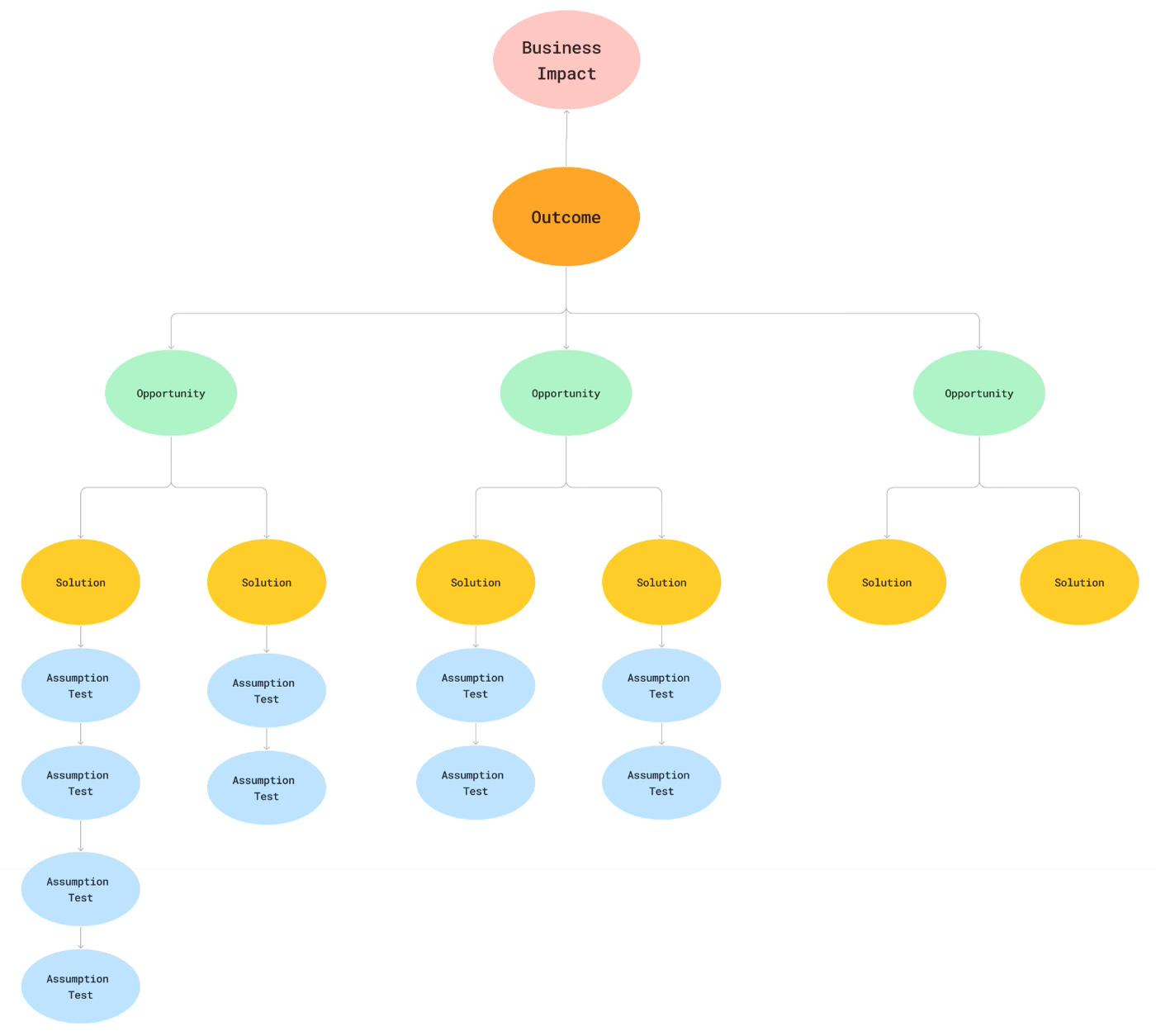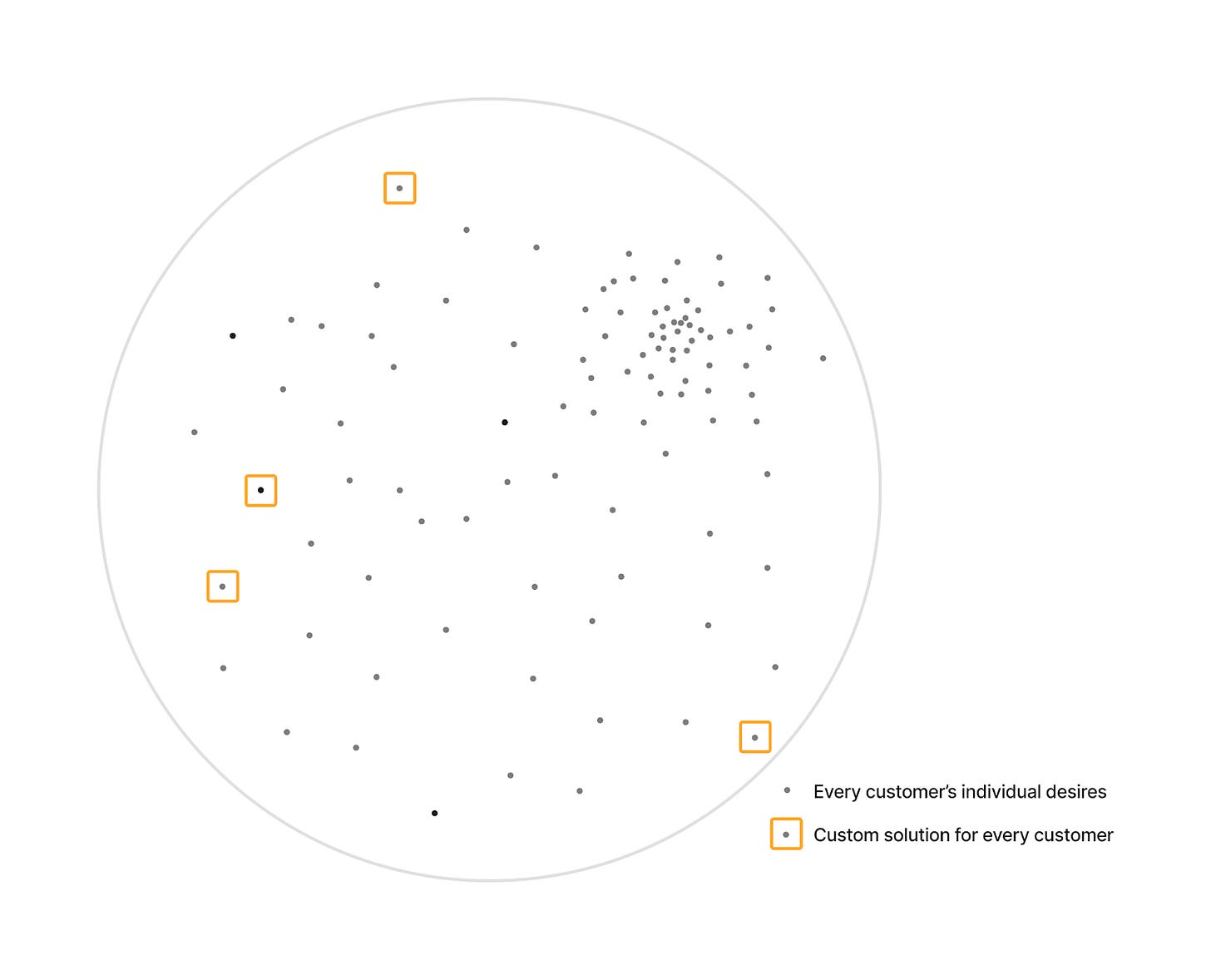“Simple can be harder than complex: You have to work hard to get your thinking clean to make it simple. But it’s worth it in the end because once you get there, you can move mountains.”
― Steve Jobs
“Focusing is about saying No.”
― Steve Jobs
“No way we could focus on a single set of users. What if someone outside our target client group wants to give us money? Would we really turn them down?”
I had been taking a group of leaders through a full-day strategy and Objectives and Key Results (“OKRs”) workshop.
As a top global OKR voice, they contacted me, believing OKRs would help them jump-start their stalled software development process.
Going in, I had two questions:
What was preventing them from delivering value? What client and company problems were they trying to solve?
What was their strategy? As powerful as OKRs can be, they can only be as effective as the strategic choices that drives them.
Understanding choices
So I encouraged them to clearly state as a group to who they were already providing products and services to, in which markets, and through which channels. (Clarifying their “Where to Play”)
What unique value and differentiation were they already giving these users? (Identifying their “How to Win” choices)
And what user and business problems would they be addressing?
And then “the list” came out.
The legacy list
Over time, they had amassed a gigantic list of features based on random user requests.
This was when the influential leadership team member objected that any limitation on their “Where to Play” and “How to Win” choices could reduce their potential market share.
So, based on the remote possibility that a theoretical user outside their target group might want to do business with them, they pushed back against any focus.
The entire list had to be done, all of them yesterday.
Not choosing is a choice
How effective could any team be attempting to simultaneously deliver 100 different features?
And of all those features, probably only 3-5 would really matter to the right users, the ones who believe in their brand, trust their business, and are looking for. ways to hand over their money.
The sad truth is that every day, in companies that are unable to understand and speak effectively to them, their best customers get fed up and leave, looking for better service elsewhere.
The opportunity
This group seemed so close to clarifying and aligning around their strategic thinking to effectively serve a set of users, and addressing their needs.
But the fact they wouldn’t pin down whom to serve and how, meant their challenges delvering value would most likely continue.
Unfortunately, the concern of limiting growth in the future was causing them to miss opportunities in the present.
The reality of trying to appeal broadly for growth
But the truth is that when you attempt to please everyone, you end up more often pleasing no one.
Success depends on making simple, clear choices.
And at the same time, saying no to certain other choices.
We’ll look at two very different paths companies take to answering these questions, and the far-reaching implications of each for the future of the product.
1) Customer-Led, Growth-focused
In Customer-Led, Growth-Focused environments, the assumption is that we’re unable to grow because our product lacks one or more features that will make it a runaway success for every possible user.
So our main goal is to attempt to find and fix any and all customer problems.
In this model, we try to capture every feature request or complaint users make.
But what we don’t see from this view is trying to please any potentially interested customer constantly, we’re going to end up with a random jumble of features that can make our product strategy look like this:
Random Customer Feature Requests
Adapted from Foster, Ben; Nerlikar, Rajesh. Build What Matters: Delivering Key Outcomes with Vision-Led Product Management (p. 25). Lioncrest Publishing. Kindle Edition.
With their huge lists of user complaints, customer-led companies believe surveys and prioritization frameworks will help them decide which feature will unlock their desired growth.
Scale over focus
Most businesses have “fuzzy” general growth goals because they believe:
More customers = More $$$
So we just want to shovel as many people as possible into the top of our funnel.
Because we’re refusing to accept the reality that our products and services address some users’ needs better than others.
So we ask every user who comes what they want and how they would improve our product.
Begging for direction
By pestering our customers with in-app surveys, focus groups, and questionnaires, we keep shoving everything they ask for into our massive Backlog, our endless “Roadmap to nowhere.”
The problem here is we’re giving our power away to random customers who may in fact have no interest in us or our product.
It’s not the feature
As I’ve made the case for in previous posts about prioritization and growth, without a clear set of strategic choices to build and grow a clear “Product Win Zone,” attempting to please random angry customers with prioritization frameworks will lead us nowhere.
Because the truth is, we’ll never be one feature away from success.
2) Customer-Centric Strategy-focused
In stark contrast to the Customer-led company using a “scattershot” approach to growth at all costs, Customer-Centric, strategy-focused companies start with strategy and deep capabilities across the Product Trio:
Product
UX
Tech
They use cross-functional skills to discover, deliver, and iterate products that delight a specific set of customers. Customer-centric companies are guided by strategies that work backward from their target customers’ needs.
Designing strategy
Designing strategy can be as simple as answering the two questions:
Where Will We Play? Ex.: Small business owners with $500k-$2 million in annual revenue
How Will We Win? Ex.: Offer them proven ways to systematize and automate areas of their business they’re now handling manually. This will remove them as a bottleneck, give them more free time, and allow them to scale their businesses to more locations and more customers.
Strategy as a problem-solving framework
The way we uncover our customers’ unmet needs, hopes, and desires is simply by talking to our target customers regularly, and using the technique of generative, story-based interviewing.
In this way, we encourage clients to tell stories about their experiences to uncover unmet needs:
“Tell me about a time when…”
Uncovering opportunities and solutions through stories
Speaking to customers can uncover the right solutions that will deliver our outcomes.
Because they have no idea of what’s possible, we should never ask clients what we should build for them.
Our skill comes in identifying the right “opportunities,” their unmet needs.
And rapidly testing small ideas to identify our assumptions.
Watch them carefully step through paper prototypes or mock-ups.
Only in this way do we have a chance to deliver client behavior-change outcomes, which mean success for them, in ways that we also understand ladder up to mutual success for our business.
One great way to do this is by using Opportunity Solution Trees, made popular Teresa Torres and her ProductTalk.org team.

By making the full logic thread from Business Impact down to Assumption, we can prioritize in the right layer – Opportunities.
We can then use the full skillset of the Product Trio to discover, design, and build products and services to address them.
Connect client Opportunities to Business Impact
When we make product strategy choices to help people achieve their needs, they'll be delighted to give us their business and hand over their money.
Our goal isn’t to copy another business to try to be “better,” but to find an underserved area where you can provide unique value.
And serve those opportunities.
In this way, there will always only be a few things we need to build at any one time that will mean success for our users, as well as for our business.
And a far smaller group of users you need to listen to.
Takeaways
While it seems counterintuitive, when we intentionally limit our focus to better serve the needs of a specific set of customers through clear “Where to Play” and “How to Win” choices, we can in fact be far more effective.
To do so, we need to:
Consciously make choices
Speak to regularly to the right target end-users
Discover the ways your products and services can offer unique value
In this way, we’ll always know what to build next to provide maximum value.





Many thanks for the interesting article. In general, I agree with your considerations, but experts who advocate focused strategic approach always forget to mention that this approach is also very risky.
In theory it looks perfect:
1. Find your core customers
2. Identify their needs
3. Build a product that satisfies these needs better than those of your competitors
4. Enjoy your profits.
But there is a pitfall here. Or, rather, a number of pitfalls.
1. Finding these customers is much more difficult than it may seem
2. If you make a mistake, it may destroy your business. Thousands of startups and businesses who have closed their doors have a lot to tell us about that. m
3. Finding these customers, identifying their needs and building a perfect product for them will take years.
4. If we stick to the focused strategy, we become vulnerable. As soon as a competitor who can somehow offer more value to our customers than we can emerges, we are dead.
So, different situations require different approaches, and we need to stay flexible. Though, it doesn't mean, of course, that we should try build a product for everyone and add every feature our customers ask for to our solution.
In the mid June, I will be happy to send you a copy of my book in which I delve into the matter, and will be happy to hear your feedback.
Thank you once again for intresting articles!